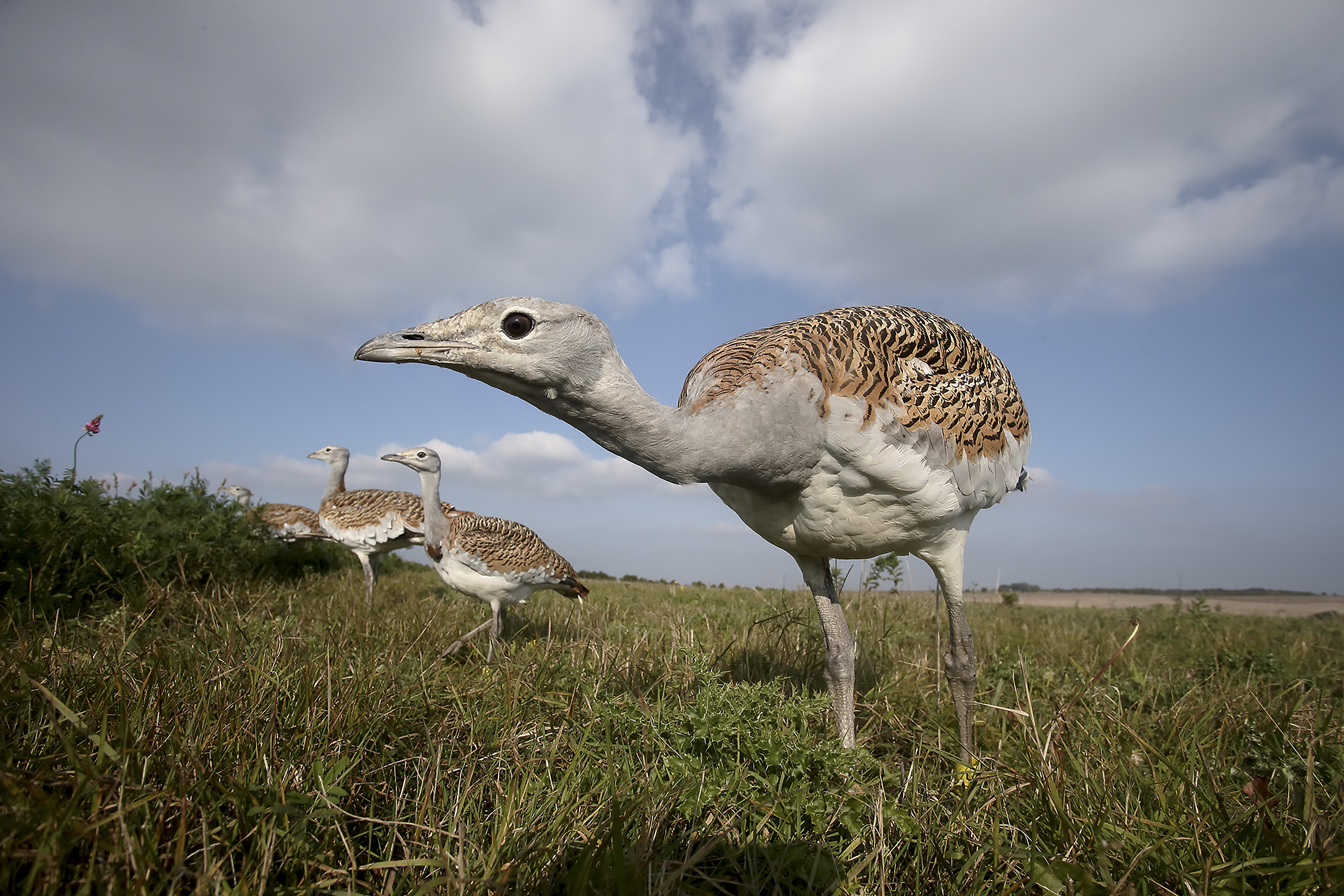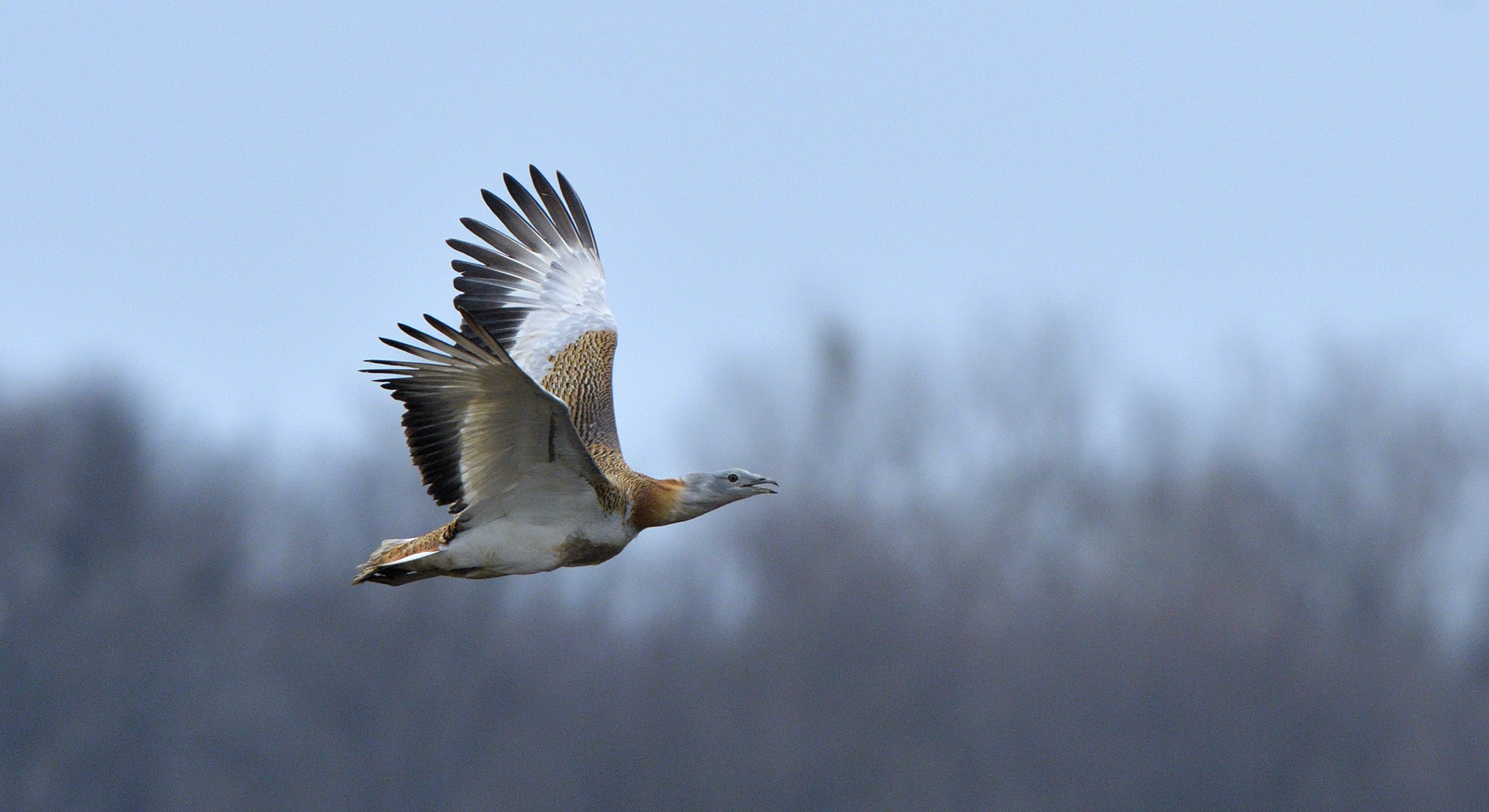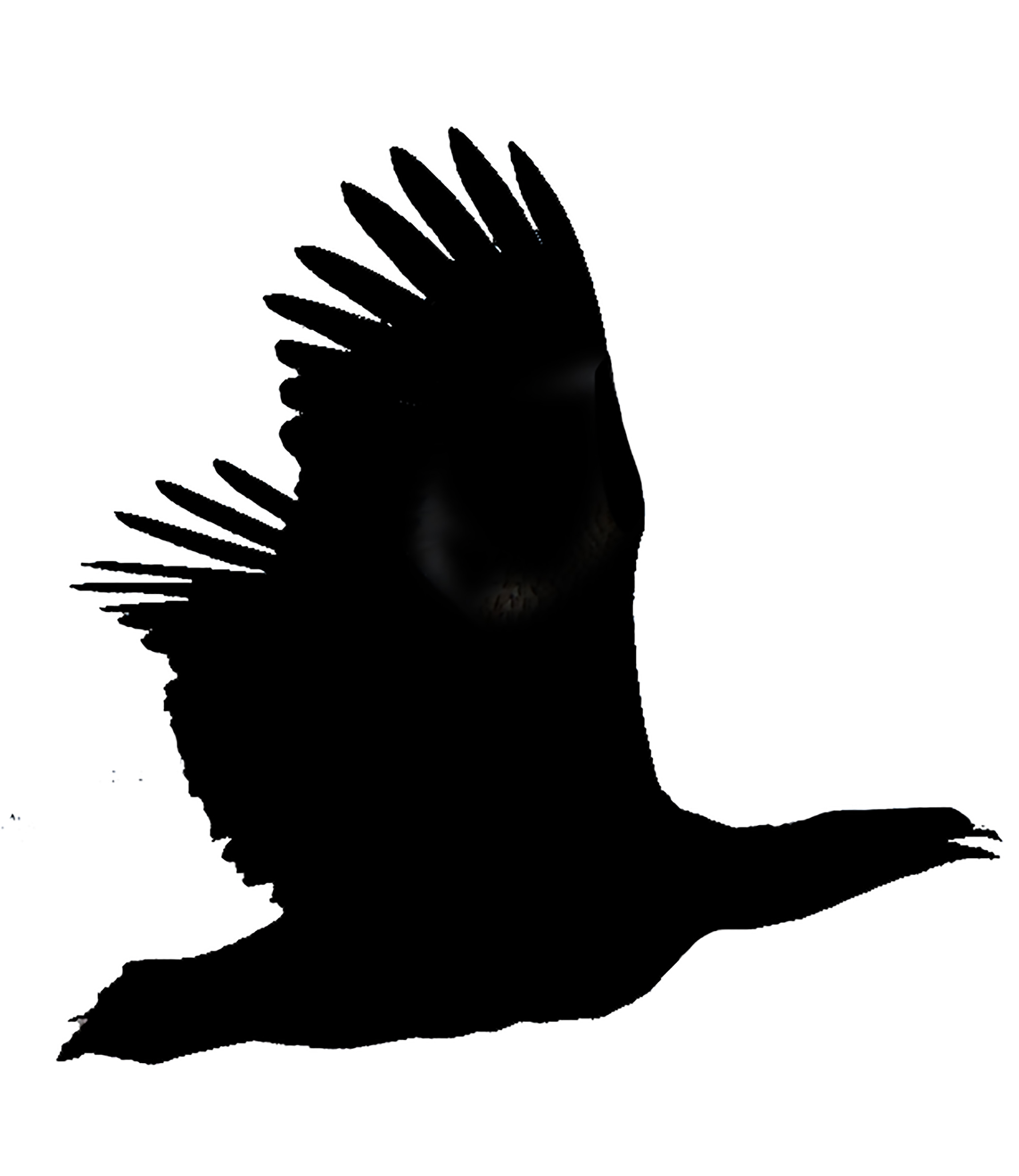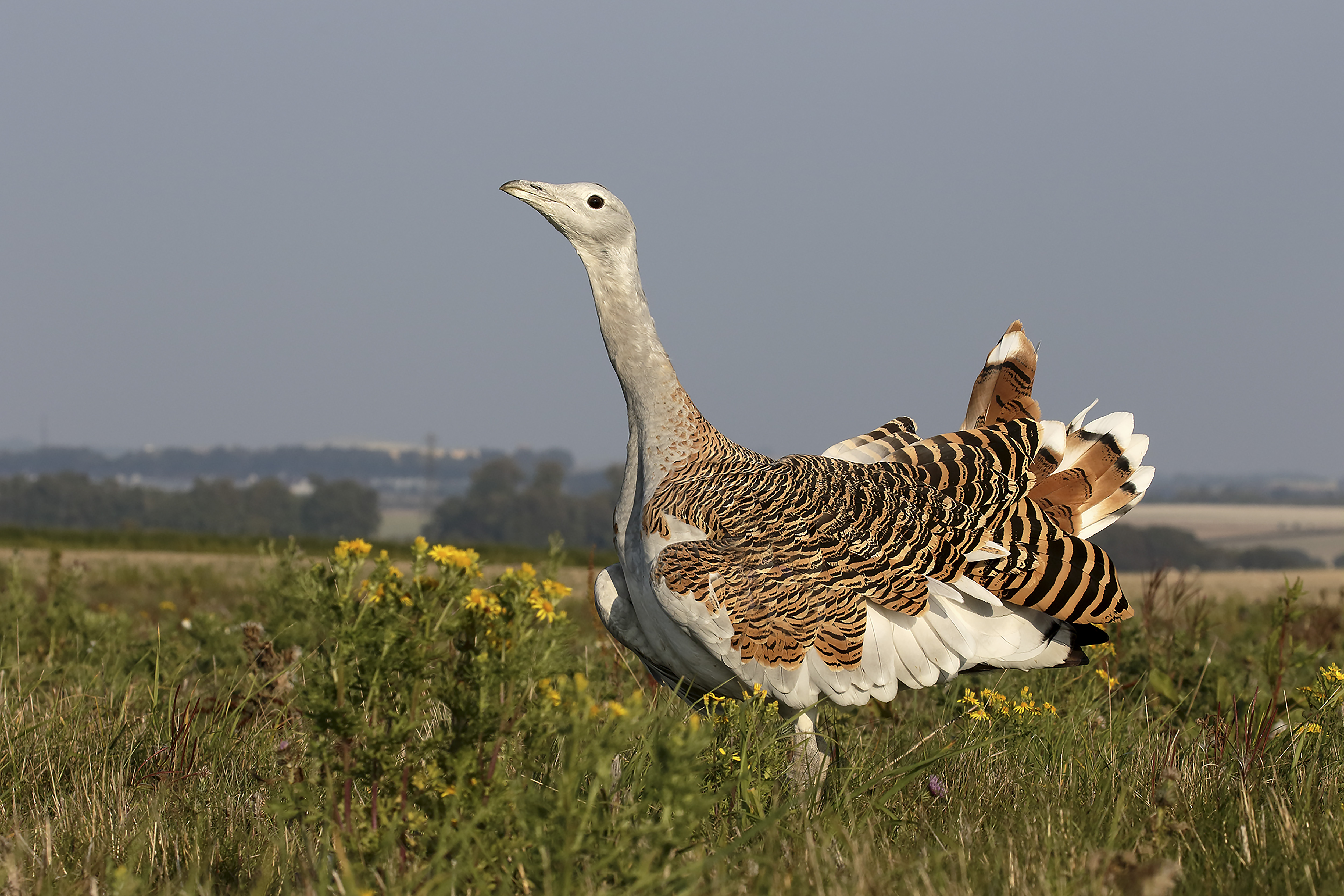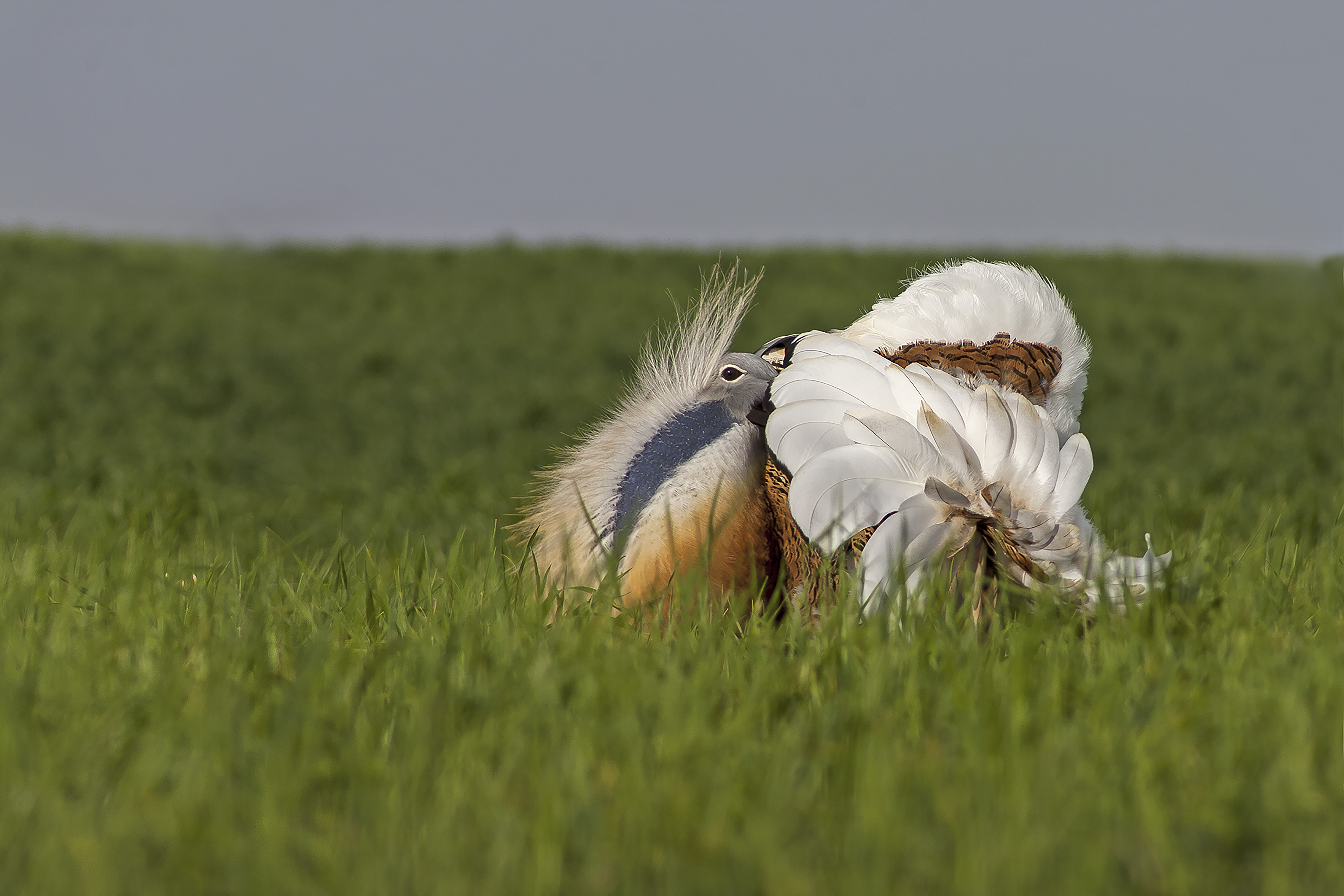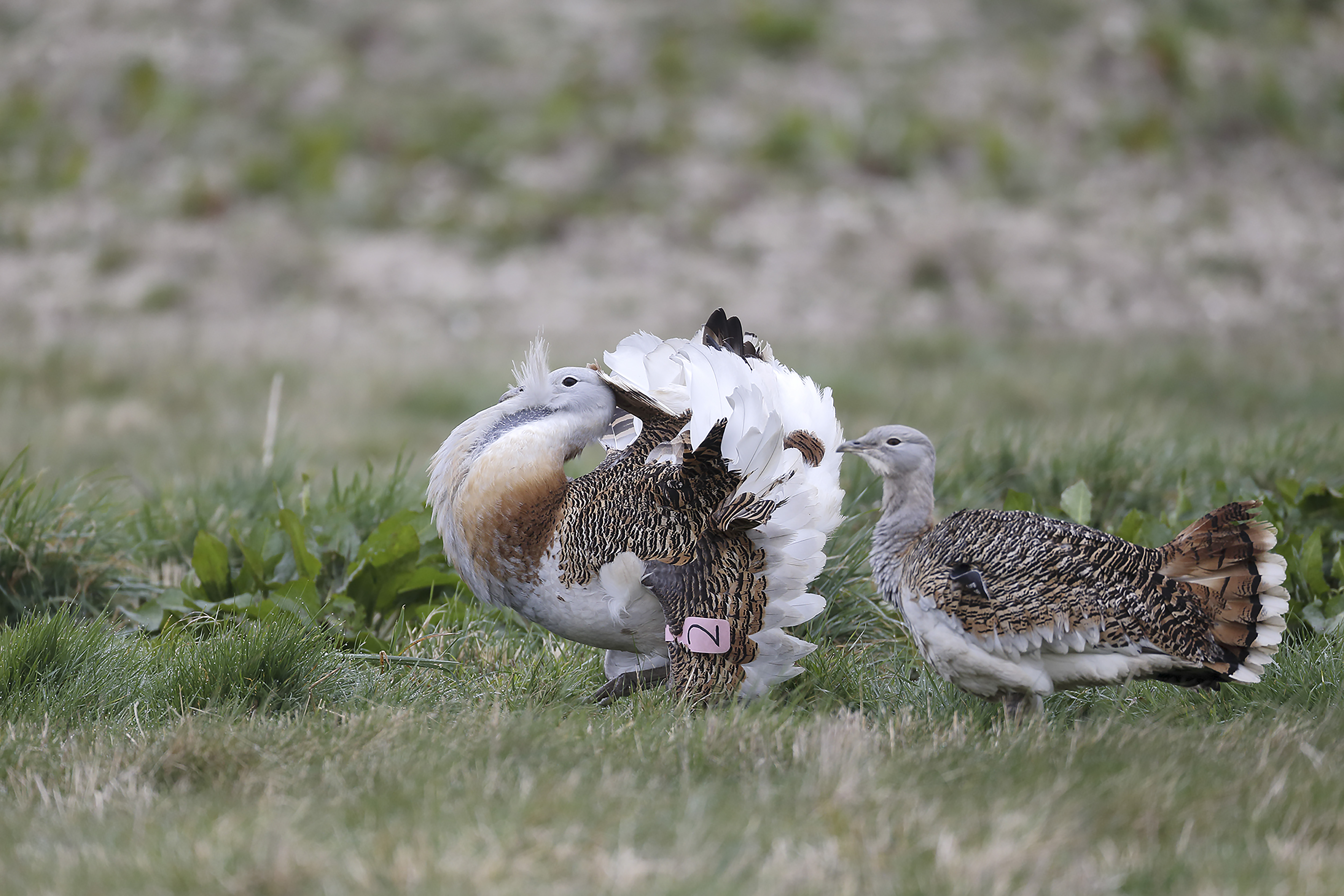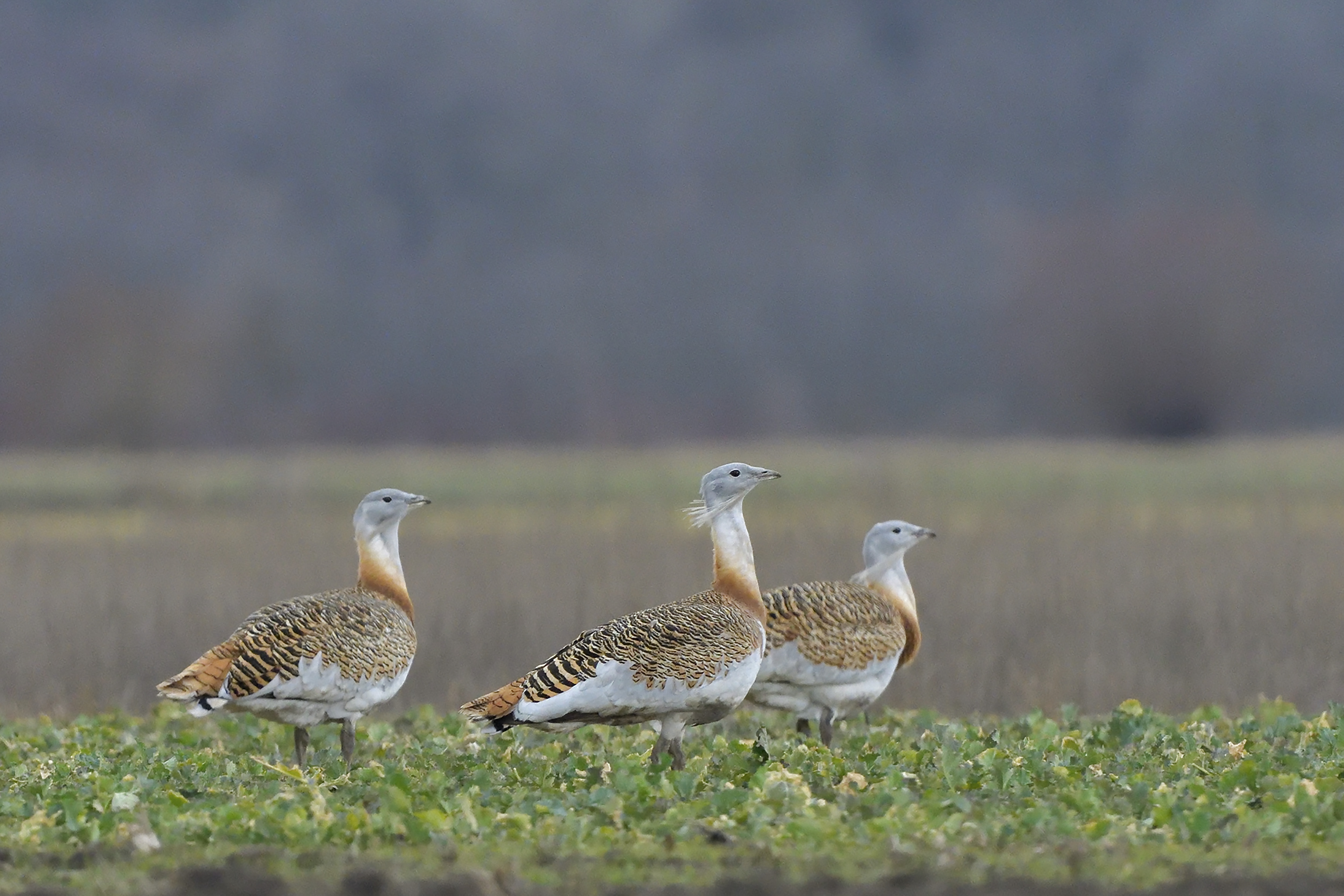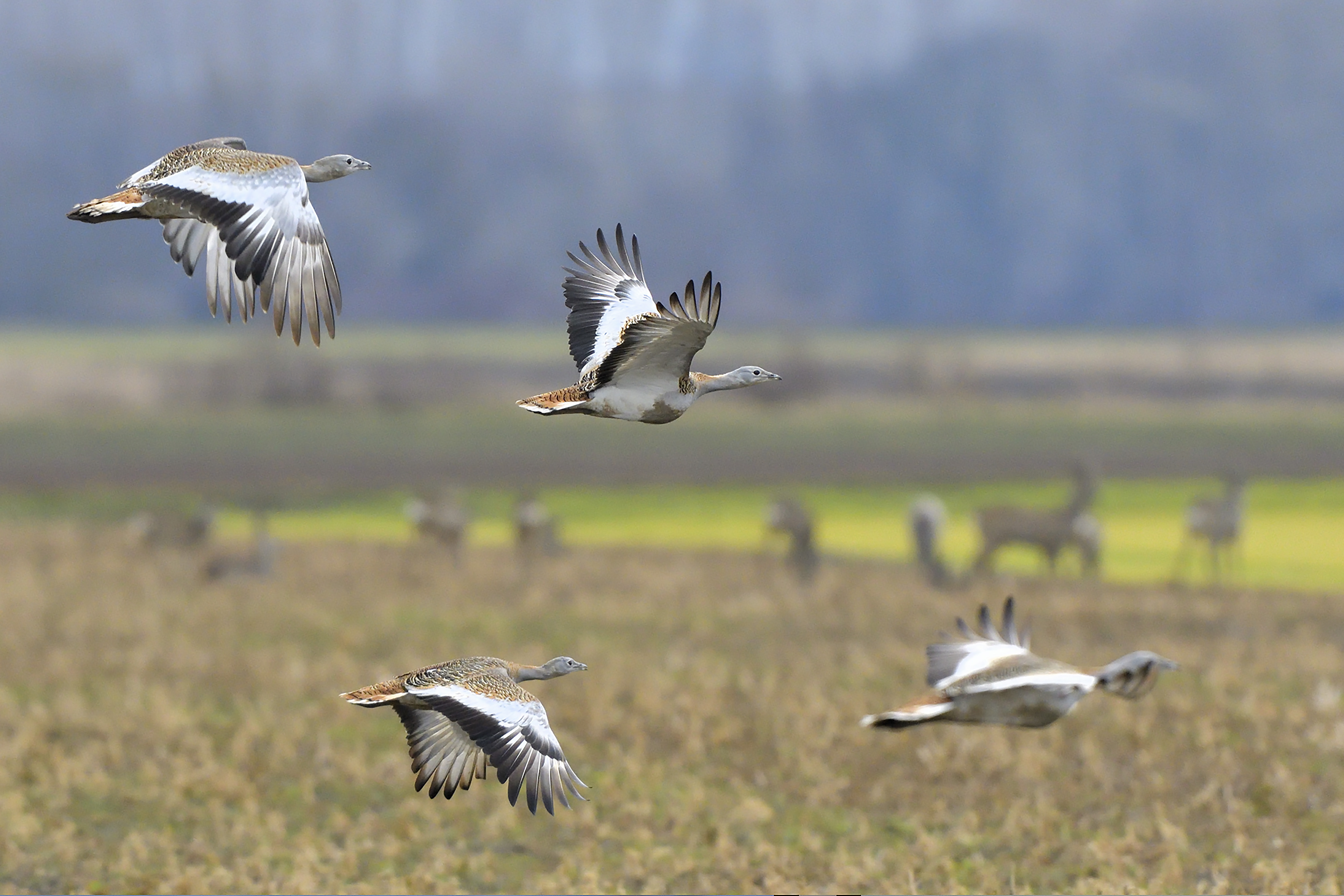Great Bustard
(Otis tarda)
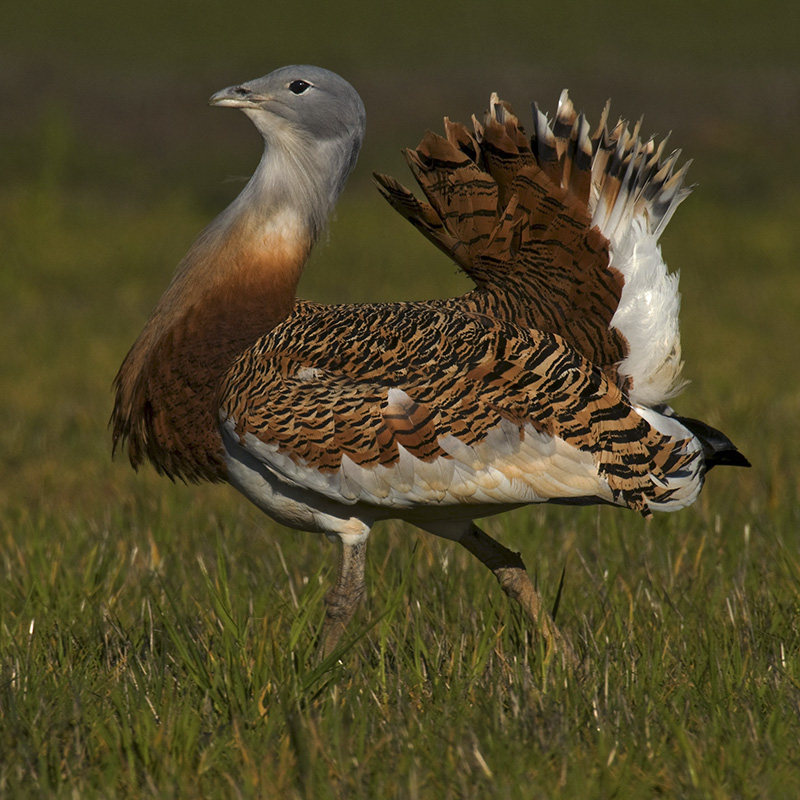
Altai-Sayan Montane Forests
STATISTICS
Weight up to
16 kgs
Lifespan
20 Years
Wingspan
250 cm
Camouflage - Powerful in Flight - Fast Runner
Native to grassland and steppe habitats, the Great Bustard with its long legs, long neck and dense barrel-chested body, is possibly the heaviest living flying animal. It has a stately and measured walk, but tends to run when disturbed rather than fly. This is because the Great Bustard can reach trotting speeds of up to 48 km/hour.
The Great Bustard is attracted to regions with considerable insect activity, especially for younger individuals. That being said, over 80% of this species dies in the first year of life, primarily due to predation. Adult males also tend to have a higher mortality rate than females because of fierce infighting with other males during breeding season.
Predation in later years is uncommon because the Great Bustard travels in sizable social groups. Portugal and Spain now contain around 60% of the world’s population, with more than half residing in Spain alone.
BIODIVERSITY BENEFIT
Seed Dispersal ; Population Control
THREATS
Habitat Degradation
Due to agricultural intensification, land-use changes and infrastructure development.
Habitat Loss and Fragmentation
Due to ploughing of grasslands, intensive grazing, and increasing development.
Poisoning
Indiscriminate poisoning of wild birds for trade in China.
Hunting
A major threat in Morocco, Syria, Turkey, Ukraine, China, Kazakhstan, Uzbekistan and Mongolia and by tourists in East Asia.
Climate Change
Harsh winter weather causing adult mortality and heavier summer rainfall leading to loss of clutches.
PROTECT THE WILDARK 100
